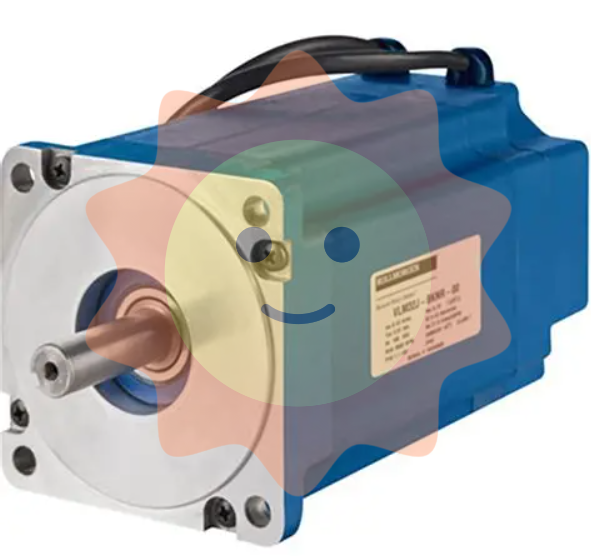The Ministry of Life Sciences 2022 Annual Guidelines Guide the application category Original Exploration Program project Guide
The progress of life science depends on the innovation of research techniques and methods. At present, life science research is undergoing the transformation of "multi-disciplinary convergence" research paradigm characterized by systematization, quantification and engineering, and is realizing the leap from "interpreting life" to "designing and creating life". In the field of biotechnology research that needs to be strengthened in the development of life science, the Life Science Department of the National Natural Science Foundation of China plans to set up a special project on "Future Biotechnology" to guide researchers to focus on cutting-edge technologies in life science research (hereinafter referred to as the original project). It provides new technical methods for understanding life and analyzing life phenomena, and provides more technical support for improving people's life and health.
First, scientific objectives
Develop technologies and means for the reading, transformation, synthesis, bionics and regeneration of living bodies, broaden the application scenarios of biotechnology, promote the integration of multiple disciplines, promote the change of life science research paradigm, and provide theoretical reserves and technical support for the strategic task of serving the "four aspects" of basic research.
2. Proposed research direction
With the above scientific objectives, it is proposed to fund the following research:
(1) New principles, new methods and new technologies for the observation of life phenomena
Through new research paradigms and technologies, the bottleneck of measurement technologies such as imaging and sequencing is broken, and high-precision, multi-dimensional, cross-scale, ultra-sensitive and high-throughput observations of life processes are realized. Funding directions include but are not limited to: Bioimaging that breaks the limits of current spatial and temporal resolution, multi-imaging modal integration, marker-free bioimaging, cross-scale imaging modal fusion, spatial multidimensional omics, single-cell multidimensional, subcellular structure multidimensional, chromatin multidimensional regulatory omics, single molecule imaging, live cell super-resolution imaging, Multi-dimensional imaging, multi-dimensional imaging, multi-dimensional imaging, multi-dimensional imaging, multi-dimensional imaging, multi-dimensional imaging, multi-dimensional imaging, multi-dimensional imaging, multi-dimensional imaging, multi-dimensional imaging, multi-dimensional imaging. In situ analysis of the structure of biological macromolecules, labeling and tracing of living cells and living substances and information, and ultra-sensitive, high-throughput, rapid monitoring of living substances and environmental molecules.

2. Rational design and engineering construction technology of life system
To meet the needs of rational design and engineering construction of life system, research on enabling technology is carried out. Research and develop new technologies and methods that can achieve accurate editing, design and manipulation of biomolecules, and conduct in-depth research on their technical principles. Funding directions include but are not limited to: Research on new methods and new technologies for efficient genetic transformation of non-model species and organelles, new technologies and new applications for editing and manipulating DNA and RNA, new technologies for design, synthesis and manipulation of macromolecules such as proteins, polysaccharides, lipids and new heterozygous molecules (such as the hybridization of small molecular compounds), and new technologies for digital design of biological traits.
Original research focused on the rational (predictable) design, synthesis and creation of living systems around major fundamental science issues in the life sciences and major national needs in related fields such as life and health. Funding directions include but are not limited to: design and construction of efficient carbon sink artificial biological systems, design and construction of intelligent microorganisms, engineering biology research of immune cells, and rational design and construction research of other biological systems (including organelles, cells, multicellular systems, non-cellular systems, etc.).
3. Quantitative analysis and calculation technology of life data
In view of the continuous accumulation of multidimensional biological big data, research and development of new algorithms and new technologies for data processing and analysis, to achieve an engineered system with independent intellectual property rights, promote the construction of shared technology platforms and user environments, and provide new models and new mechanisms that can be verified experimentally. Funding directions include but are not limited to: standardized collection and safe sharing technology of multi-dimensional and cross-scale biological data, biological storage and computing technology of digital information, accurate labeling, quantitative processing, computational analysis and modeling and simulation of big data related to brain and cognitive science, brain-like intelligence research, and deep application of new artificial intelligence technology in the field of life science.
4. New technology for improving agricultural biological traits
New technologies for improving agricultural biological traits have been developed in order to focus on the cutting-edge scientific problems of agricultural biological traits improvement and the important needs of precise creation of fine germplasm. Funding directions include but are not limited to: panoramic multidimensional omics analysis of breeding target sites for complex traits, precise regulation and design of complex traits, and new technologies for efficient gene transformation and delivery.
5. Other cross-fusion biotechnologies
Technology development and tool development in response to specific life science research needs. Encourage the research and development of common and cross-tool technologies derived from the integration of basic disciplines, engineering disciplines and life sciences, and develop new methods in fields including biofabration, biological regeneration, and other new technologies.
Iii. Duration and intensity of funding

The funding term of this original project is 1-3 years, and the funding intensity is not more than 1 million yuan/project per year. Applicants may choose the duration of funding and propose funding requirements in a realistic manner according to the actual needs of the research work. The study period in the application should be filled in as "January 1, 2023 - December 31, 202*."
4. Application requirements
(1) Eligibility for application.
Scientific and technical personnel who have undertaken basic research projects (topics) or other basic research experience can apply. The research work to be carried out by the applicant shall meet the relevant regulatory requirements of the national biosafety conditions. The core research content of the original project cannot be repeated with the National Natural Science Foundation or other national science and technology plan projects that are being implemented or under review.
(2) Limited application provisions.
1. Applicants can only apply for 1 original project in the same year (including pre-application).
2. The application and evaluation process of original projects will not be included in the total number of projects applied for and undertaken. After receiving funding, it will be included in the total number of projects applied for and undertaken (except for projects with a funding term of 1 year or less).
Application procedure
(1) Pre-application.
1. Pre-application submission time is from October 10, 2022 to 16:00, October 12, 2022, subject to the submission time of the information system, late application will not be accepted.
2. Please log in network information system of national natural science foundation of China (hereinafter referred to as the information system), https://isisn.nsfc.gov.cn writing application. Applicants who do not have an information system account should apply for an account opening from the fund management contact person of the supporting unit. Under the "Application and Acceptance" menu of the information system, click "Original project pre-application" to enter the pre-application filling page, select "Guidance category", and select "Future biotechnology" in the notes. Application code 1 select the corresponding application code of the Life Science Department, and application code 2 select the corresponding application code according to the field involved in the project research. Projects whose above selection is inaccurate or not selected will not be eligible for funding.
3. The pre-application mainly describes the originality, science and potential influence of the proposed academic ideas, with a word limit of 2000 words. In addition, the applicant should also indicate the name of the proposed research direction listed in this Guideline in the "Compatibility with the Guidelines" section. The applicant shall fill in the relevant contents of the pre-application according to the relevant prompts in the information system and submit it directly to the Natural Science Foundation.
4. NSFC accepts pre-applications and organizes review. The results of the review and the deadline for formal application submission will be emailed back to the applicant. The personal or organizational information of any applicant shall not be filled in the body of the pre-application, otherwise it will not pass the pre-application review.
(2) Formal application.

1. The applicant who has passed the pre-application review shall fill in the formal application in accordance with the requirements of "Special Project - Original Exploration Plan project formal application Outline". The core research content of the formal application should be consistent with that of the pre-application, and it is required to clearly state in the first sentence of the Chinese abstract of the formal application the research direction listed in this Guide corresponding to the project to be funded. The applicant should clearly state in the body of the application the promotion role and contribution of the project to the field.
2. The project shall not have more than 2 cooperative research units, and the main participants must be actual contributors to the project.
3. The applicant shall prepare the project budget in accordance with the relevant provisions of the Measures for the Management of Funds for Projects funded by the National Natural Science Foundation and the specific requirements of the Instructions for the Preparation of the National Natural Science Foundation Project Budget Table, in accordance with the basic principles of "policy compatibility, objective relevance and economic rationality", and in combination with the actual needs of the project research.
4. This original project adopts a paperless application. After completing the application, the applicant shall submit the electronic application and attachments online. The supporting unit only needs to confirm the electronic application form and the attachment materials online, and does not need to submit the paper application form, but should carefully examine the authenticity and integrity of the application materials submitted by the applicant of the unit, and confirm the submission of the electronic application form and the attachment materials through the information system before the deadline for receiving the project application; Submit the project application list online within 24 hours of the deadline. After the project is approved, the supporting unit will bind the paper signature and seal page of the application at the end of the funded Project Plan, and submit it together within the specified time as required. The signed and stamped information should be consistent with the electronic application form.
- EMERSON
- Honeywell
- CTI
- Rolls-Royce
- General Electric
- Woodward
- Yaskawa
- xYCOM
- Motorola
- Siemens
- Rockwell
- ABB
- B&R
- HIMA
- Construction site
- electricity
- Automobile market
- PLC
- DCS
- Motor drivers
- VSD
- Implications
- cement
- CO2
- CEM
- methane
- Artificial intelligence
- Titanic
- Solar energy
- Hydrogen fuel cell
- Hydrogen and fuel cells
- Hydrogen and oxygen fuel cells
- tyre
- Chemical fiber
- dynamo
- corpuscle
- Pulp and paper
- printing
- fossil
- FANUC
- Food and beverage
- Life science
- Sewage treatment
- Personal care
- electricity
- boats
- infrastructure
- Automobile industry
- metallurgy
- Nuclear power generation
- Geothermal power generation
- Water and wastewater
- Infrastructure construction
- Mine hazard
- steel
- papermaking
- Natural gas industry
- Infrastructure construction
- Power and energy
- Rubber and plastic
- Renewable energy
- pharmacy
- mining
- Plastic industry
- Schneider
- Kongsberg
- NI
- Wind energy
- International petroleum
- International new energy network
- gas
- WATLOW
- ProSoft
- SEW
- wind
- ADVANCED
- Reliance
- YOKOGAWA
- TRICONEX
- FOXBORO
- METSO
- MAN
- Advantest
- ADVANCED
- ALSTOM
- Control Wave
- AB
- AMAT
- STUDER
- KONGSBERG
- MOTOROLA
- DANAHER MOTION
- Bently
- Galil
- EATON
- MOLEX
- Triconex
- DEIF
- B&W
- ZYGO
- Aerotech
- DANFOSS
- KOLLMORGEN
- Beijer
- Endress+Hauser
- MOOG
- KB
- Moxa
- Rexroth


Email:wang@kongjiangauto.com


































































































